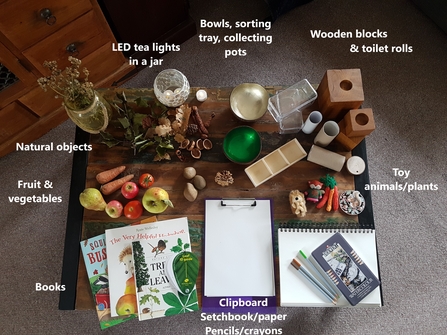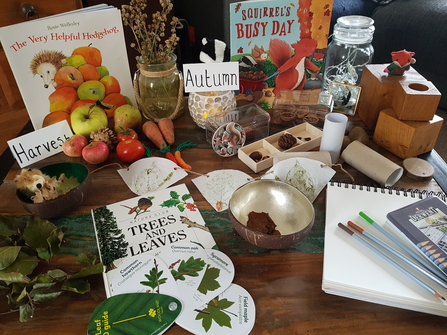Happy autumn! The start of September is a lovely time of year to celebrate autumn and a nature table can help support children’s observation skills and provide lots of sensory learning. It also provides children with everyday opportunities to connect with nature.
You will need
Here are some of the things you could include in your nature table - you can use whatever you have available!
- Flat surface or table top
- Natural objects – pine cones, dried leaves, bark, dried grass
- Fruit and vegetables
- Wooden blocks/ toilet rolls
- Felt toys/finger puppets
- Magnifying glass
- Collection pots/bowls/sorting trays
- Treasure bags
- Box photo frames
- Clipboards
- Sketchbook/paper
- Pencils/crayons/pens/watercolours & paintbrushes etc.
- Spotter sheets (download button below)
- Natural/artificial plants
- Sensory lights (Battery LED tea lights or fairy lights)
- Camera or mobile phone with camera



